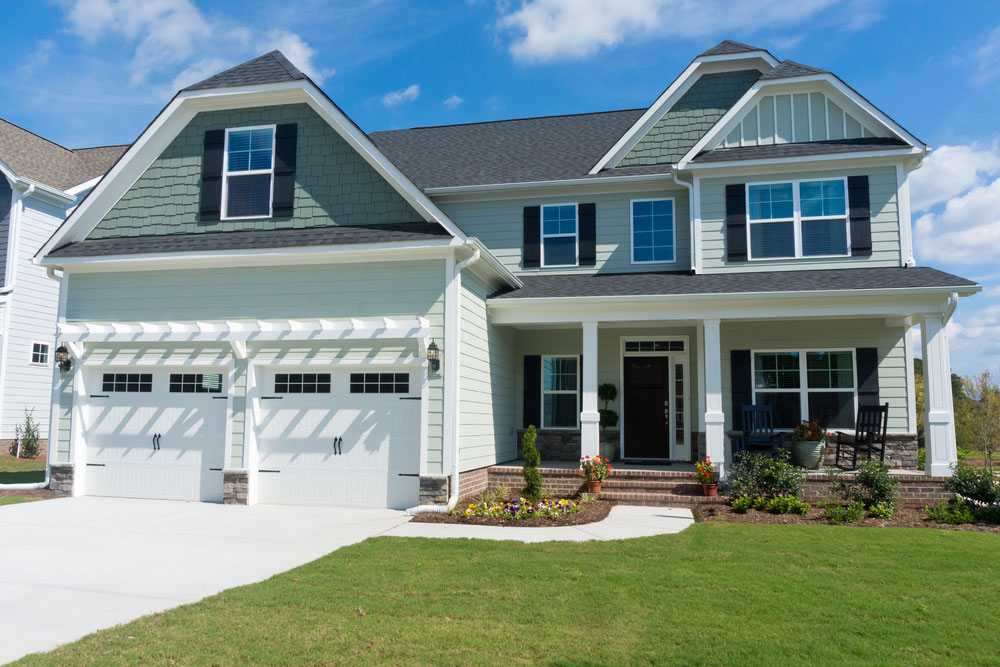Landscaping next to a home’s foundation can make the structure look more aesthetically pleasing. But if it’s not done properly, it could have a negative impact on your home’s structural integrity. It can even lead to expensive repairs later on. Most foundation problems are caused by too much water in the surrounding soil, which can wreak havoc on your home’s foundation. It’s more than just a minor inconvenience. If your foundation starts to shift or settle, it can cause cracks in your walls, ceilings, and floors (which can lead to expensive repairs).

How Landscaping Can Cause Foundation Problems
You may have passed by a beautiful home with a gorgeous landscape to find out that the homeowner had to deal with issues related to foundation maintenance and repair. While landscaping can bring more life to your home’s exterior, you need to know how it can affect its foundation. Trees and shrubs with invasive roots can wreak havoc on your foundation’s structural integrity. Heavy landscaping features (such as large stones and concrete) can cause soil displacement, which can also cause foundation problems. While landscaping can give your home more curb appeal, you need to be aware of how it can affect its foundation.
Texas soil has a lot of clay, which is one of the main reasons why homes in this state experience a lot of foundation problems. Clay acts like a sponge, so it expands and contracts with changes in moisture levels. Soil with a high amount of clay content will absorb water from rainfall, which will cause it to expand. This puts pressure on a home’s foundation, which can cause foundational cracks and can even leave it open to the absorption of sinking water. If that happens, it can wreak havoc on your floors and even your plumbing.
During the summer when there are long stretches of excessive heat, the dryness and drought can cause clay-rich soil to contract. This can create gaps between the foundation wall and the surrounding landscape, which makes it easy for water to collect and settle. Clay soil also expands unevenly, so the different sides of your home’s foundation can move and change in completely different ways. That’s why it’s important to know how to care for your soil and to recognize the signs of foundation problems early on.
How to Create Landscaping Next to a Home’s Foundation
Landscaping is a great way to give your home more curb appeal, but it can be a challenge if it’s next to your foundation. If you’re not careful, plants and trees can damage your foundation, attract pests, or cause drainage problems. With that in mind, here are some tips that can help you create beautiful and functional landscaping next to your home’s foundation:
- Keep vegetation at least several feet away from the foundation — They may look nice when they’re planted next to your home, but they need water. You also need to avoid adding extra moisture to the ground surrounding your foundation.
- Don’t cover up your home’s foundation — You should leave at least several inches exposed to make sure that water buildup can’t go over the top of your foundation and leak into your home’s interior.
- Use mulch — This will keep the soil around your foundation from becoming too dry, which can also cause problems.
- Don’t landscape one side of the house and forget the rest — Doing this can cause you to water only one side of your foundation, which can be a problem if the soil has a lot of clay. It will expand when it gets wet and will shrink when it dries out. So if you water only one side of your foundation, you will have the problem of that side continuously expanding and contracting.
All of these tips will help you create a beautiful and sustainable landscape that will complement your home’s architecture and protect your foundation.

How You Can Prevent Problems with Your Foundation
Because most foundation problems are caused by excess moisture in the surrounding soil, you can prevent any problems by getting groundwater levels around your foundation under control. This can be done in the following ways:
- Clean your gutters on a regular basis to make sure they’re not full of dead leaves and other debris.
- Install downspout extensions in your gutter system to carry water at least 15 feet away from your foundation before it’s released.
- Install a drain tile system.
If you’re looking for one of the best places for foundation repair in Corpus Christi, be sure to get in touch with Streem Foundation Repair.
